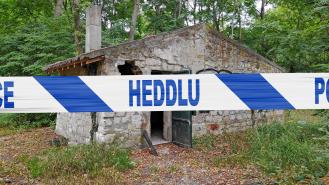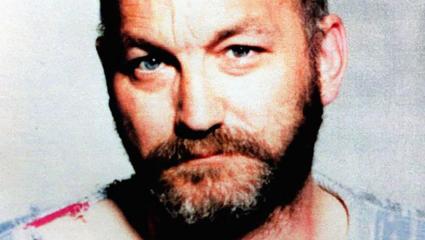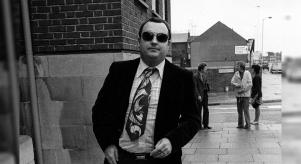


Peter Moore: The Welsh serial killer you’ve never heard of
Peter Moore wasn’t the type of man you’d cross the street to avoid. The Welshman was the friendly owner of a small chain of independent movie theatres, known for his dry sense of humour and a passion for old films. But beneath the surface of this seemingly ordinary life lay a dark secret. Moore murdered four men in the space of just three months. He later described his actions as a 'campaign of pure hatred'.
But ask most people in Britain today who Peter Moore is, and they’ll draw a blank. How did one of the country’s most sadistic serial killers slip into the shadows of history?
A killer hidden in plain sight
Moore’s killing spree started in September 1995. His victims were all men. There was no clear pattern to his victims; they were of different ages and backgrounds. What they had in common? Crossing paths with a man who hid his sadism behind a mask of civility.
The first victim, Henry Roberts, was a widower who lived alone in a rural cottage. Moore broke into his home and stabbed him repeatedly before fleeing the scene. Over the next three months, Moore killed three more men: Thomas Hulse, Keith Randles and Anthony Davies.
Each victim was stabbed multiple times, their bodies left in isolated locations. Moore seemed to relish the violence and later described his murders with an almost casual detachment.
What was perhaps most chilling was Moore’s lack of motive. There were no grand ideological beliefs, no jealousy or rage, no twisted logic. When asked why he killed, he replied simply, 'For fun'.
A trail of horror
For months, Peter Moore evaded capture. He was, after all, the last person anyone would suspect. It’s a narrative similar to Rolf Harris, the lovable Australian larrikin convicted of indecent assault on girls.
The breakthrough came after the murder of Anthony Davies. Witnesses reported seeing a van near the crime scene, and police traced it back to Moore. A search of his home revealed a grim collection of knives, clothing from the victims and other incriminating evidence. Disturbingly, he had documented his crimes with meticulous notes. It was as if Moore wanted to preserve his own twisted legacy.
When questioned, Moore showed no remorse. His confession was disturbingly detailed and delivered with a detachment that left investigators unnerved.
A community shattered
Moore’s arrest brought relief, but the damage was already done. The towns and villages of North Wales were left reeling with the reality that such evil had been living among them. For a region where life had always felt safe and predictable, Moore’s crimes were a harsh wake-up call. 'Why him? Why us?' were the questions that echoed long after Moore was locked away.
Families mourned their loved ones while neighbours questioned how they could have missed the warning signs of a Welsh serial killer.
Why don’t we remember him?
Despite the brutality of his crimes, Peter Moore’s name is rarely mentioned alongside Britain’s most infamous killers. There are several reasons for this.
His killing spree was relatively short, lasting only a few months. By the time he was caught, there hadn’t been enough time for the media to build the kind of sensational coverage that often cements a killer’s name in public consciousness.
Timing also played a role. Moore was arrested and tried during the mid-1990s, a period dominated by high-profile cases like Fred and Rose West. Their crimes — infamous for their scale and the horrific details — eclipsed Moore’s.
Another factor may be the profile of his victims. They were ordinary men, many of them living on society’s margins. The press, always hungry for sensational details, gave them little attention, and their deaths didn’t generate the same public outrage as cases involving children or families.
A legacy of fear
Peter Moore was sentenced to life in prison in 1996. He remains one of the few prisoners in the UK serving a whole-life sentence. For those who lived through his reign of terror, his name is a permanent scar. But for the rest of Britain, he is a forgotten shadow, a reminder of how quickly even the most horrifying crimes can fade from collective memory.
Lessons from the forgotten
So why does Peter Moore’s story still matter? Because it reminds us of the fragility of the safety we take for granted.
Moore’s crimes also force us to confront uncomfortable truths. Evil doesn’t always come with warning signs. It doesn’t always announce itself with loud threats or strange behaviour. Sometimes, it wears a suit, shakes your hand and blends into the background.
For the people of North Wales the lesson hits especially hard. He lived among them, attended community events, and chatted with neighbours, all while carrying out acts of unthinkable violence.












